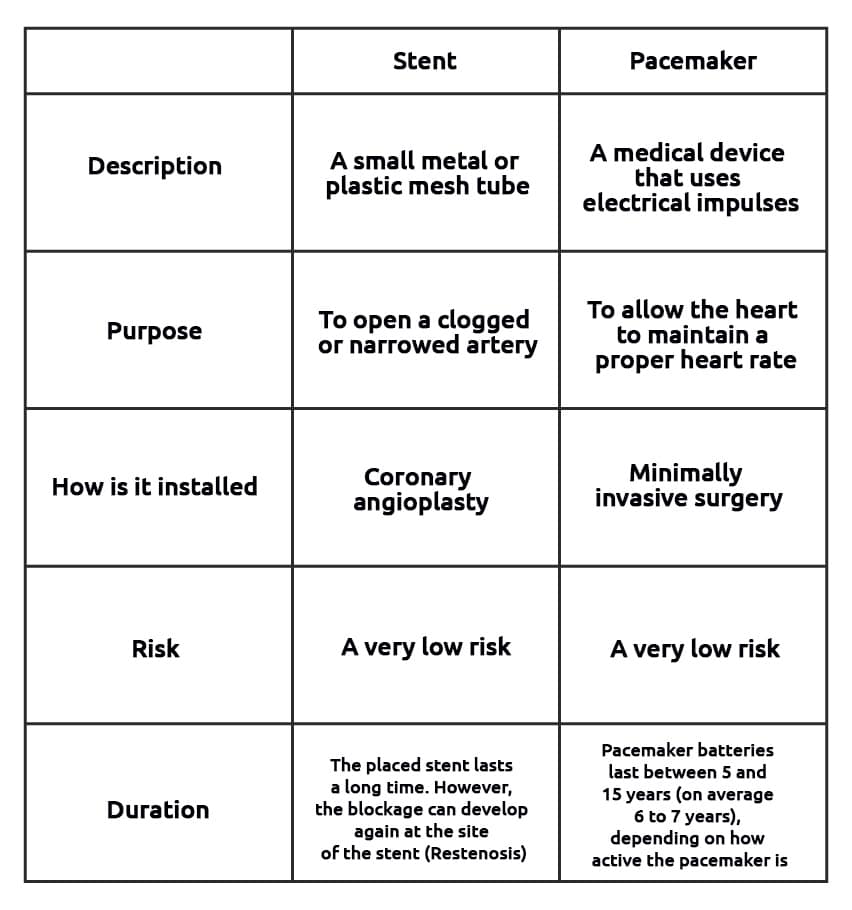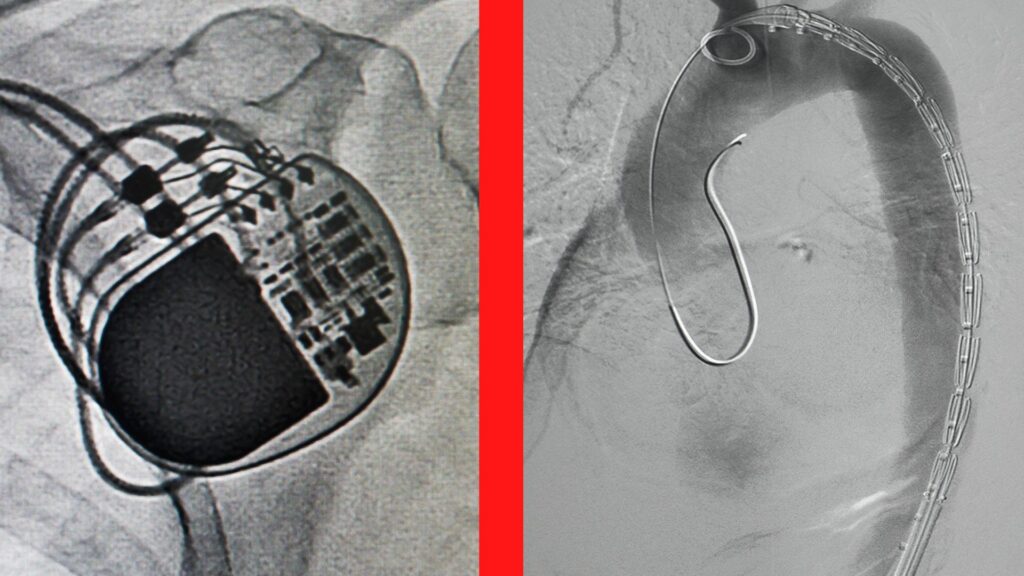Stent and its purpose:
A stent is a small plastic or metal mesh-like tube that a specialist inserts into a patient’s blocked blood vessel using a catheter. The stent then keeps the artery open, allowing blood to flow normally. Some stents can be coated with medications. In addition to arteries, stents can be used to expand bile ducts, bronchi, ureters, and other pathways.
Stents are primarily used to keep blocked pathways open. In most cases, they enable patients to return to their normal lives. In the case of a blocked artery, a stent is typically inserted through coronary angioplasty. This is a procedure in which a small incision is made, and the stent is placed in the blocked area using a catheter. It is a relatively safe procedure. However, there is a small risk of inflammation and infection, which is usually treated with antibiotics.
There are many different types of stents available on the market, such as bare-metal stents, drug-eluting stents, bioabsorbable stents, dual-therapy stents, or covered stents. A doctor should advise the patient on which type would be most suitable for their condition.
The implantation of a stent is performed by our cardiologists in the Ctah-lab at PULSE Cardiology Center, one of the best-equipped facilities in Serbia and the region.
Pacemaker and its purpose
A pacemaker is a completely different medical device that uses electrical impulses and is implanted under the skin in the chest or abdomen area. It uses electrical impulses to stimulate the contraction of the heart muscle and thereby helps regulate the heartbeat.
A pacemaker consists of two parts: the pulse generator and the leads that deliver the impulses from the generator to the heart. The pulse generator contains a battery and an electrical circuit that controls the rate of electrical impulses sent to the heart. One to three flexible leads are insulated wires placed in one or more chambers of the heart and deliver electrical impulses to adjust the heart rate.
Pacemakers are recommended for people who have irregular heartbeats or arrhythmias because they help maintain an appropriate rhythm of the heartbeat.
The implantation of a pacemaker requires a minor surgery under local or general anesthesia, in which an incision is made and the pacemaker is inserted beneath the skin. One, two, or three leads are inserted into a vein located under the collarbone and threaded through to the desired position in the heart. These leads deliver electrical impulses. The lead is then connected to the generator.
Pacemakers are powered by batteries, which typically last between 5 and 15 years. On average, these batteries last 6 to 7 years, depending on the brand and model, as well as the activity level of the pacemaker. Regular pacemaker check-ups are necessary to monitor the device’s battery function and to consult with a cardiologist.
The difference between a stent and a pacemaker
It should be noted that in certain cases, the implantation of a stent can lead to the development of arrhythmias, which may require the implantation of a pacemaker.






